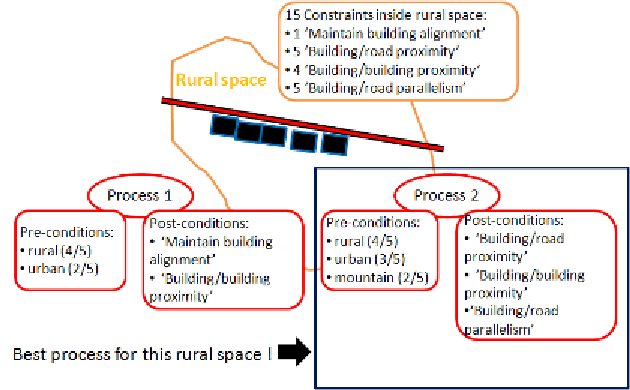Geoscience Reference
In-Depth Information
with relevance rate (e.g. 'urban area 4/5') contains the request space type,
the process is selected; then it is rated according to relevance rate.
In a second step, the processes are reordered according to the description
post-condition, the list of a priori satisfied constraints after generalisation:
a ratio is computed between the post-condition and the occurrences of con-
straints inside the space (
Figure 6
). The ratio weights the relevance rate,
reordering the processes.
Figure 6:
Illustration of the registry response according to the constraints inside a given
space: process 2 matches 14/15 constraints against 5/15 for process 1.
Scheduling Component
The
scheduling component
orchestrates the generalisation of spaces by
processes. After every generalisation, it decides what to do next: it chooses
the next type of geographic space to generalise and then orders the in-
stances of this type. As in a
Global Master Plan
(Ruas and Plazanet 1996)
but here rule-based, the space type (urban, rural...) is chosen according to
the active
sequencing rules
. If it is not enough to choose, the space type
whose instances have the highest conflict mean is selected first. Once the
type chosen, the instances are ordered by conflict importance: the most
conflicting ones are peeked (
Figure 7
).

